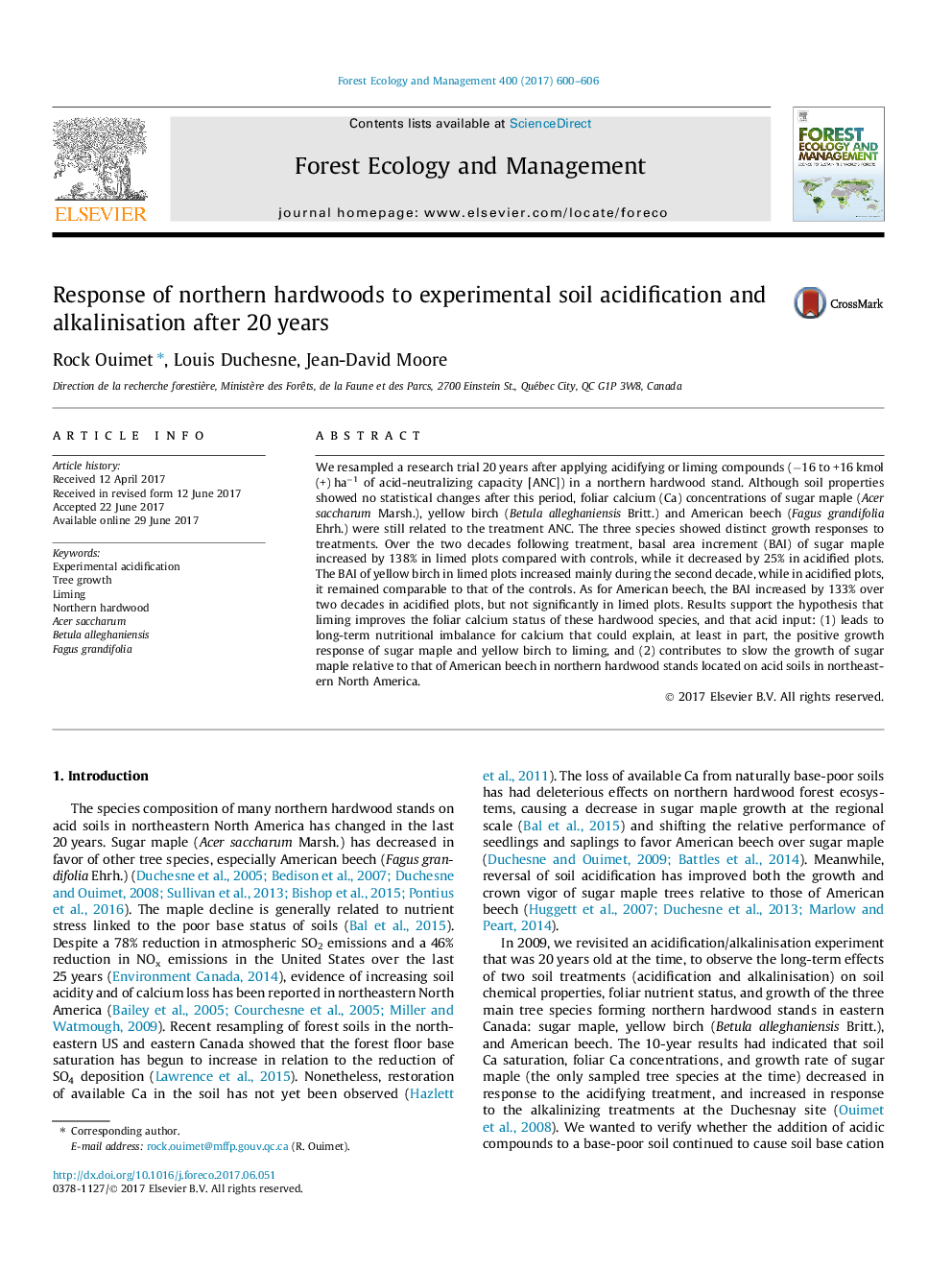| کد مقاله | کد نشریه | سال انتشار | مقاله انگلیسی | نسخه تمام متن |
|---|---|---|---|---|
| 6459308 | 1421358 | 2017 | 7 صفحه PDF | دانلود رایگان |

- An acidification/liming trial in a northern hardwood stand was resampled after 20Â years.
- Foliar Ca concentrations of 3 tree species were still influenced by the treatments.
- Growth of two hardwood species responded positively to liming over the two decades.
- Growth decreased for sugar maple but increased for American beech in acidified blocks.
- Species growth responses could explain shifts in composition in northern hardwoods.
We resampled a research trial 20Â years after applying acidifying or liming compounds (â16 to +16Â kmol(+)Â haâ1 of acid-neutralizing capacity [ANC]) in a northern hardwood stand. Although soil properties showed no statistical changes after this period, foliar calcium (Ca) concentrations of sugar maple (Acer saccharum Marsh.), yellow birch (Betula alleghaniensis Britt.) and American beech (Fagus grandifolia Ehrh.) were still related to the treatment ANC. The three species showed distinct growth responses to treatments. Over the two decades following treatment, basal area increment (BAI) of sugar maple increased by 138% in limed plots compared with controls, while it decreased by 25% in acidified plots. The BAI of yellow birch in limed plots increased mainly during the second decade, while in acidified plots, it remained comparable to that of the controls. As for American beech, the BAI increased by 133% over two decades in acidified plots, but not significantly in limed plots. Results support the hypothesis that liming improves the foliar calcium status of these hardwood species, and that acid input: (1) leads to long-term nutritional imbalance for calcium that could explain, at least in part, the positive growth response of sugar maple and yellow birch to liming, and (2) contributes to slow the growth of sugar maple relative to that of American beech in northern hardwood stands located on acid soils in northeastern North America.
Journal: Forest Ecology and Management - Volume 400, 15 September 2017, Pages 600-606